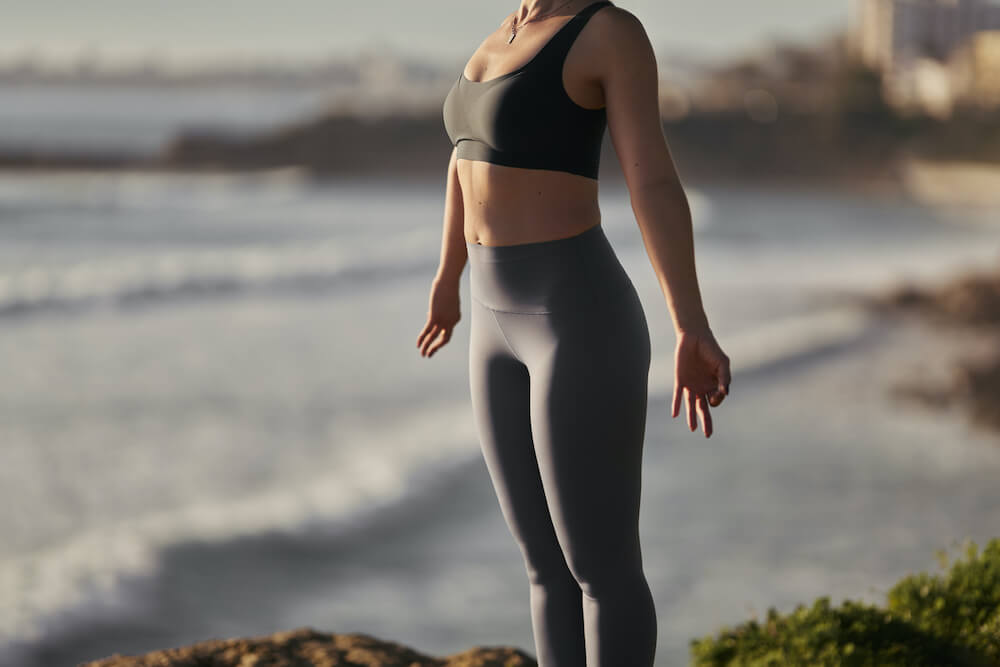Yoga is a timeless practice that combines physical postures, breathing, and meditation to improve health and well-being. For beginners, it can help increase flexibility, build strength, and reduce stress. Here is a guide to the 10 best yoga poses for beginners.
1) Mountain Pose (Tadasana)
The Mountain Pose is the foundation for all standing poses in yoga. It promotes balance and grounding.
Steps
- Stand with your big toes touching and your heels slightly apart.
- Lift and spread your toes and then lower them back to the mat.
- Align your head shoulders, hips, and ankles in a straight line.
- Let your arms fall at your sides, palms facing forward.
- Hold for 5-10 breaths.

Benefits
Mountain Pose improves your postural and body awareness by stacking your shoulders, hips, knees, and ankles. It can counter the effects of prolonged sitting at a computer by reminding you what it feels like to release your shoulders away from your ears.
2) Downward-Facing Dog (Adho Mukha Svanasana)
Downward-Facing Dog is a staple in many yoga routines, stretching and strengthening various parts of the body.
Steps
- Start on your hands and knees, with wrists under shoulders and knees under hips.
- Spread your fingers wide and press firmly through your palms.
- Tuck your toes under and lift your hips towards the ceiling, straightening your legs.
- Keep your head between your arms and align your ears with your upper arms.
- Hold for 5-10 breaths.
Benefits
It involves the whole body and benefits health in many ways. This pose energizes you, strengthens your shoulders, arms, legs, and back, improves digestion, reduces fatigue, and eases back pain.
3) Child’s Pose (Balasana)
Child’s Pose is a restful posture that gently stretches the back, hips, and thighs.
Steps
- Kneel on the floor with your big toes touching and knees spread apart.
- Sit back on your heels and stretch your arms forward, lowering your forehead to the mat.
- Breathe deeply and relax your body.
- Hold for 1-2 minutes.
Benefits
Child’s Pose is a gentle stretch for the shoulders, back, hips, thighs, neck, and ankles.
It can help relieve back pain.
4) Warrior I (Virabhadrasana I)
Warrior I is a powerful standing pose that enhances strength and stability.

Steps
- Stand in Mountain Pose and step your left foot back about 3-4 feet.
- Bend your right knee over your right ankle while keeping the left leg straight.
- Raise your arms overhead, palms facing each other.
- Square your hips forward and hold for 5-10 breaths.
- Repeat on the other side.
Benefits
Strengthens the legs, opens the hips and chest and stretches the arms and legs.
5) Warrior II (Virabhadrasana II)
Warrior II is a variation of Warrior I that deepens the stretch and engages the core.
Steps
- From Warrior I, open your hips and shoulders to the side.
- Extend your arms parallel to the floor, gazing over your front hand.
- Hold for 5-10 breaths.
- Repeat on the other side.
Benefits
Physically, it provides a powerful stretch to inner thighs, legs, groin, chest, arms, and back. The asana enhances endurance and strength of all the muscles involved along with expanding the chest and shoulders.
6) Triangle Pose (Trikonasana)
Triangle Pose is a standing pose that stretches the legs, hips, and spine.
Steps
- Stand with your feet wide apart.
- Turn your right foot out and left foot slightly in.
- Extend your arms at shoulder height.
- Reach your right hand forward, then lower it to your shin, ankle, or the floor.
- Extend your left arm towards the ceiling, gazing up at your left hand.
- Hold for 5-10 breaths.
- Repeat on the other side.
Benefits
- Stretches legs and torso
- Improves digestion
- Reduces anxiety

7) Seated Forward Bend (Paschimottanasana)
Seated Forward Bend is a calming pose that stretches the back and hamstrings.
Steps
- Sit with your legs extended straight in front of you.
- Inhale and lengthen your spine.
- Exhale and fold forward, reaching for your feet or shins.
- Hold for 1-2 minutes.
Benefits
Stretches the spine, shoulders, and hamstrings. Calms the mind.
8)Bridge Pose (Setu Bandhasana)
Bridge Pose is a gentle backbend that strengthens the back and legs.
Steps
- Lie on your back with knees bent and feet hip-width apart.
- Press your feet into the mat and lift your hips towards the ceiling.
- Clasp your hands under your back and extend your arms.
- Hold for 5-10 breaths.
Benefits
Stretches the chest, neck, and spine. Strengthens the back and buttocks.
9) Cat-Cow Pose (Marjaryasana-Bitilasana)
Cat-Cow is a flowing sequence that warms up the spine.
Steps
- Start on your hands and knees.
- Inhale, arch your back, and lift your head and tailbone (Cow Pose).
- Exhale, round your spine, and tuck your chin to your chest (Cat Pose).
- Repeat for 5-10 breaths.

Benefits
- Increases flexibility in the spine
- Stretches the neck and torso
- Relieves stress
10) Corpse Pose (Savasana)
Corpse Pose is a resting pose that promotes relaxation and stress relief.
Steps
- Lie flat on your back with your legs extended and arms at your sides, palms facing up.
- Close your eyes and breathe naturally.
- Focus on relaxing every part of your body.
- Hold for 5-10 minutes.
Benefits
- Reduces stress
- Promotes deep relaxation
- Rejuvenates the body and mind
Conclusion
Yoga is a journey that begins with a single pose. By incorporating these beginner-friendly poses into your routine, you’ll start to experience the numerous benefits yoga has to offer. Remember to breathe deeply, move mindfully, and enjoy the process of connecting with your body and mind.

